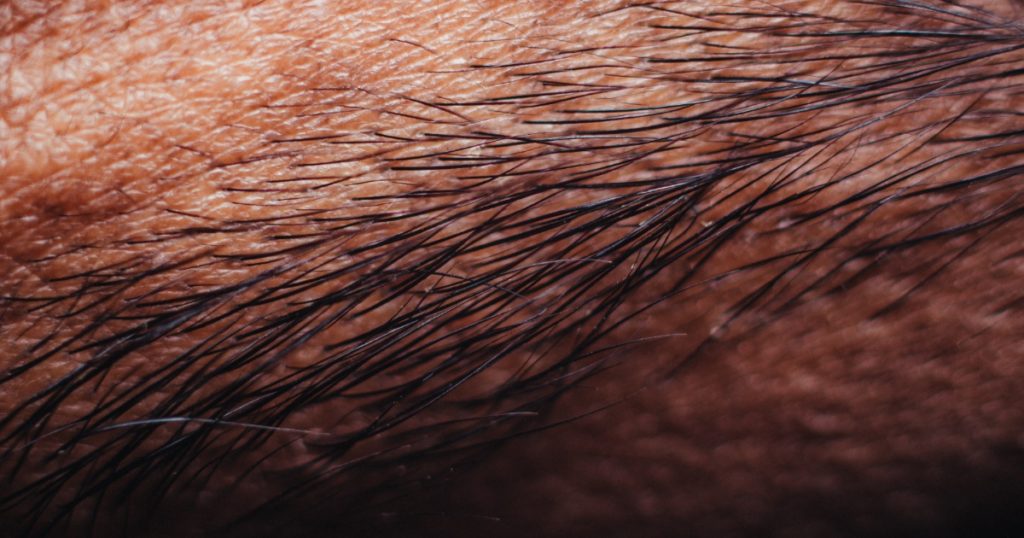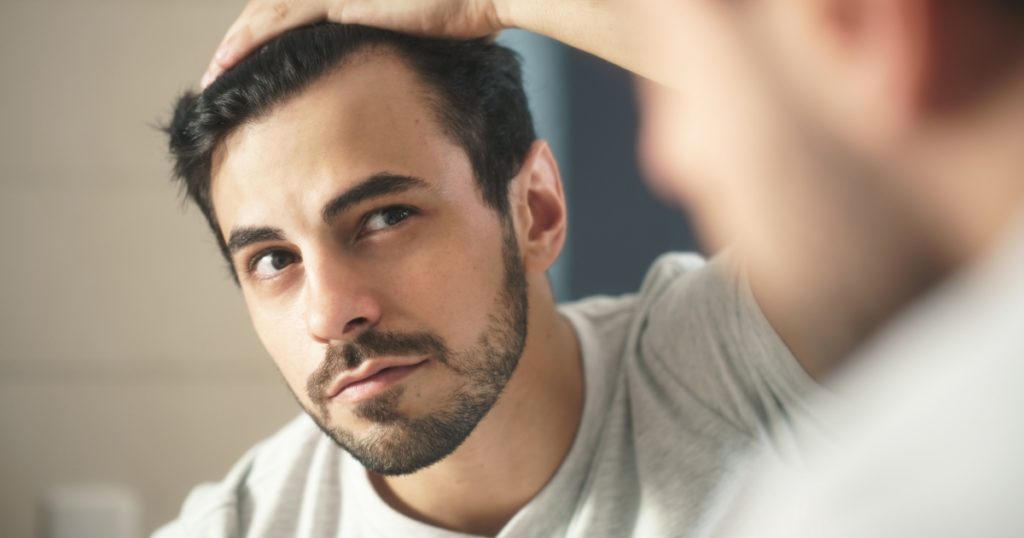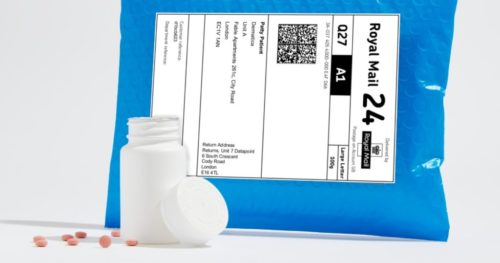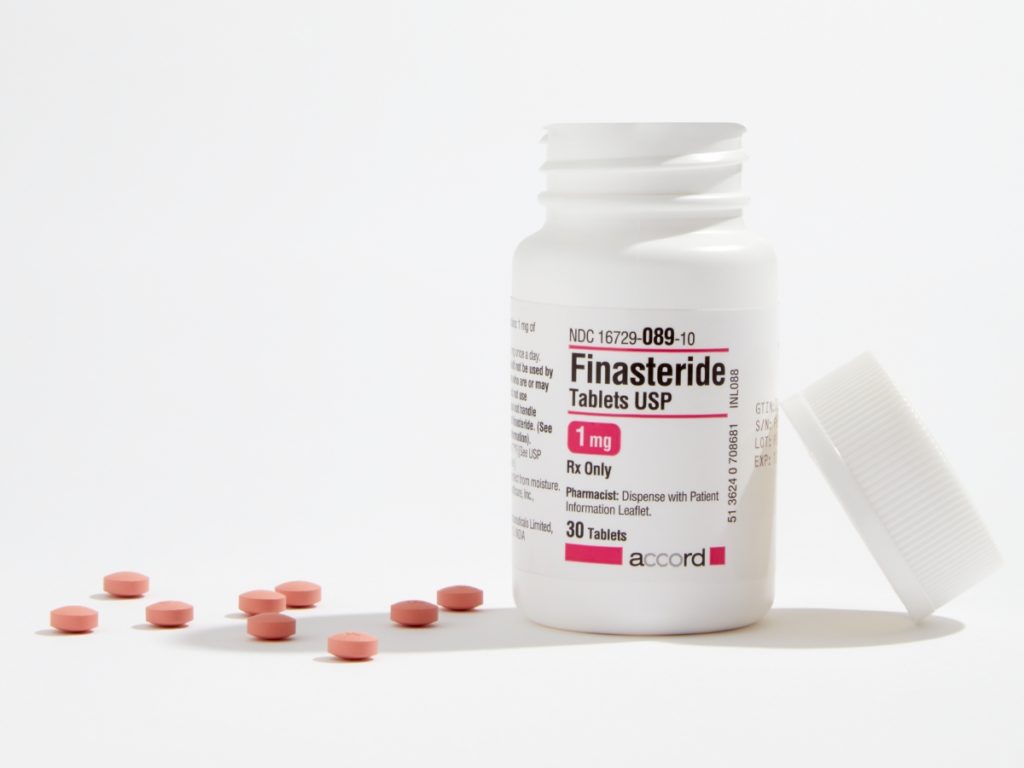Starting to notice hair loss? It’s not just you — around two-thirds of all men will experience premature hair loss in their life. Many external factors can cause hair loss, but in cases of male pattern baldness (androgenetic alopecia) it’s hereditary. This means that genes and hormones in your body actually shrink your hair follicles, stopping them from growing new hair. There are many treatments you can use to treat hair loss and even promote regrowth, and one of the most popular is finasteride, a prescription medication. Here’s your guide to finasteride, how it works, and the effect it could have on your hair loss.
What is finasteride?
Finasteride belongs to a class of medications called 5-alpha reductase inhibitors, which are a type of testosterone blocker. It’s commonly used to treat prostate enlargement, but it’s also effective in the treatment of male pattern baldness. If you’ve heard of hair loss drugs like Propecia® and Proscar®, they’re branded versions of finasteride — that means they contain the same active ingredients and are medically equivalent.
How does finasteride work?
To understand how finasteride works, it’s helpful to know about the four stages of hair growth:
- Anagen (active growing phase), where your follicles grow hairs that’ll continue getting longer until they’re either cut or fall out naturally. It lasts 3–5 years, the longest of all the phases, and accounts for around 85–90% of your head hairs.
- Catagen (transition or regression phase), when your hair shaft detaches from the follicle’s blood supply. Your hair stops growing and the follicle shrinks slightly.
- Telogen (resting phase), where your hairs don’t grow, but they also don’t fall out.
- Exogen (shedding phase), the hair fibre detaches from your scalp and falls out. New hairs start to form in the follicles that have just released hairs. Because lost hairs are already being replaced, this doesn’t affect male pattern baldness.

Hair loss happens because your hair follicle becomes weakened. A hormone called dihydrotestosterone (DHT), which is formed from testosterone, causes your hair follicles to shrink. This stops them from producing new hairs in the exogen phase, and the ones that do form are often very thin. So, when old hairs shed, they’re either replaced by finer hairs, or no hair at all. That’s where finasteride can help.
By inhibiting the enzyme in your body that converts testosterone to DHT, finasteride reduces follicle shrinkage, which means your follicles can continue creating stronger, thicker new hairs. Even better, it helps promote regrowth in areas where you’ve already lost hair, as long as your follicles are still healthy.
Shedding
You may experience more hair falling out than usual when you first start treatment, but this is no cause for concern. Dr Mia Jing Gao, a Consultant Dermatologist who specialises in hair loss, says, “At first, you may notice increased shedding, but it’ll stop after about six weeks.” Even while the shedding is happening, you should start to notice hair regrowth.
How effective is it?
Finasteride is effective in 9/10 men. A two year study followed 535 men taking finasteride and found that 99% of them experienced visible results — 66% saw hair growth, while 33% had no additional hair loss, according to a photographic review by dermatologists.

Another five year study followed 279 men taking finasteride. Again, 99% had visible results, with 48% experiencing hair growth and 42% having no further hair loss.
How long does it take to work?
Finasteride gets to work by stopping DHT production immediately, and you could see visible results within 3–6 months.
1–2 months
You may temporarily shed a bit more hair to start with, which is natural.
3–6 months
At this point, your hair loss should slow down or stop. You may start seeing signs of regrowth, too.
6 months +
Hair follicles need time to produce new hairs. With consistent treatment, your hair will continue to grow and become thicker, which will noticeably improve scalp coverage.
Does finasteride have any side effects?
Like all medications, finasteride can cause mild side effects. These are uncommon, and may include:
- Decreased libido
- Erectile dysfunction
- Mood changes, or even depression
If you have any of the following, rare side effects, you should speak to your GP:
- Signs of serious allergic reactions, including: skin rash; itching; swelling of the face, lips, or tongue; extreme dizziness; difficulty breathing
- Swelling or tenderness in the breasts, or pain or fluids leaking from the nipple
- Pain in the testicles
- Inability to urinate
Side effects are nothing to worry about, they’re often temporary and stop with long-term use.
What happens if you stop taking finasteride?
It’s important to be aware that finasteride is only effective as long as you’re taking it. 24 hours after your last dose, the levels of finasteride in your system become too low to block the enzyme that creates DHT. That means it’ll start affecting your follicles again, leading to more hair loss. To get the best results, continue taking finasteride regularly and stick with it.

If you’re ready to start treating hair loss, start a free consultation and find the best treatment for you. Plus, you can subscribe and save 10% today.
MedExpress is one of the few UK online pharmacies that are fully compliant with the Medicines and Healthcare Regulatory Agency’s strict regulations on the sale and supply of prescription medicines. All our products are safe, authentic and prescribed by clinical experts.
